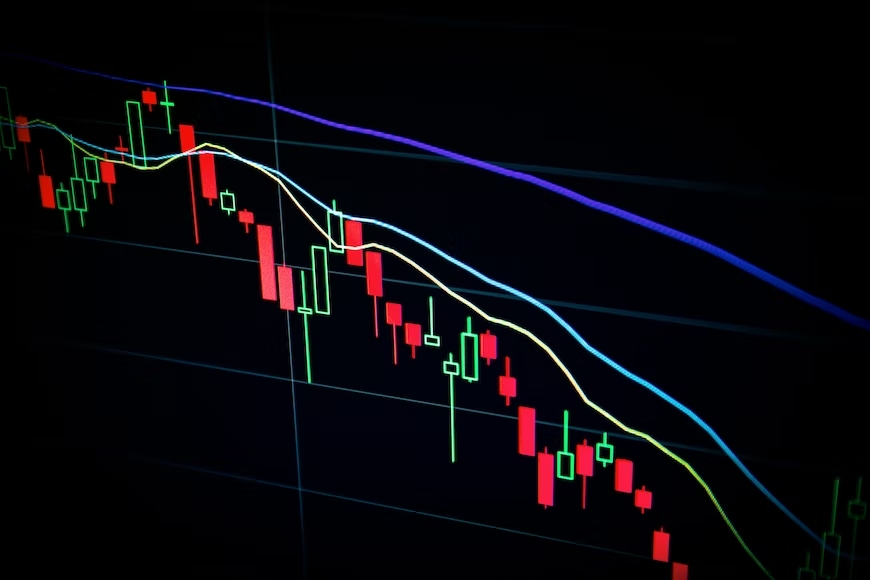Australian Securities Exchange (ASX)
A public company that runs and operates Australia's primary securities exchange.
The ASX is a public company that runs and operates Australia's primary securities exchange. The company was instituted on 1st April 1987, with its current Headquarters in Sydney, Australia.

Initially, it was a union of six security exchanges under the legislation of the Australian Parliament. Subsequently, in 2006, it merged with the Sydney Futures Exchange.
The ASX Group is a market operator, clearing house, and payment system facilitator.
Moreover, it promotes fair corporate governance among listed businesses in Australia while keeping an eye on compliance with its operational regulations. It also helps in educating retail investors looking to maximize their wealth.
ASX relies on a sizable data center, like most global exchanges, to connect to important financial hubs and enable electronic trading.
Today, ASX is one of the top 15 listed exchange groups in the world, with an average daily turnover of $4.685 billion and a market capitalization of about $1.6 trillion.
Sector Indices of the ASX
MSCI and Standard & Poor's (S&P) developed the Global Industry Classification Standard (GICS) in 1999 for use by the global financial community.
It has classified all major public companies into 11 sectors, 24 industry groups, 69 industries, and 158 sub-industries.
The ASX adopted GICS in 2002, along with its 11 sectors. ASX and S&P Dow Jones have also developed five other sectors.
1. Energy (XEJ)
The energy sector includes all companies in the oil, gas, and consumable fuels industries. This includes firms that locate, drill for, and extract the commodity.

There are two parts to the energy industry:
- Energy Equipment & Services industry.
- Oil, gas, and Consumable Fuel industry.
It also includes companies that refine the material or manufacture the equipment used in the refinement process. For example, Exxon Mobil and Chevron refine natural gas, while Kinder Morgan transports fuel to gas stations.
2. Industrials (XNJ)
The industrial sector comprises three industries:
- Capital goods industry.
- Commercial & Professional Services
- Transportation industry.
Aerospace and defense, and construction and engineering, are two of the most important businesses in the industry. The sector has 14 different industries due to the vast diversity of businesses. Delta Air Lines, FedEx Corporation, and Boeing Company are the most well-known companies.
3. Consumer Discretionary (XDJ)
Discretionary consumer goods and services are objects or services that are not necessary for survival.
The consumer discretionary industry comprises four industries:
- Retail industry
- Consumer Services industry
- Consumer Durables & Apparel
- Automobiles & Components
Automobiles, jewelry, sporting goods, and other products are discretionary products. On the other hand, trips, hotel stays, and dining in a fine restaurant are luxury experiences.
4. Consumer Staples (XSJ)
Consumer staples companies provide all life's necessities. The consumer staples sector comprises three industries:

- Food, beverage & tobacco
- Household & Personal Products
- Food & staples retailing industry
Procter & Gamble is a well-known company. Another example is Kroger, the largest supermarket chain in the United States. The sectors covered are food and beverage, household product, and personal product.
5. Communication Services (XTJ)
The communication services industry comprises two industry groups:
- Media and entertainment industry group.
- Telecommunications services industry.
6. Materials (XMJ)
Materials companies provide the raw materials that other industries need.
The materials sector comprises five industries:
- Metals and mining
- Chemical industry
- Construction materials industry
- Container and packaging manufacturers and suppliers
- Paper and forest products industry
Container and packaging firms that manufacture tape are not associated with materials but operate in the sector.
7. Health Care (XHJ)
There are two industry groups in the healthcare sector:
- Health Care Equipment & Services
- Pharmaceuticals, Biotechnology, and Life Science

A few well-known names are Johnson & Johnson and Tylenol. Cannabis businesses are a new but fast-expanding segment of the healthcare industry.
8. Financials (XFJ)
The financial sector includes companies dealing in finance, investment, or the transportation or storage of money.
The financials sector comprises three industries:
- Diversified Financials industry
- Insurance industry
- Bank industry
JPMorgan Chase & Co., Goldman Sachs, Berkshire Hathaway, and American Express are influential names in the business.
9. Information Technology (XIJ)
The IT industry includes corporations that develop or distribute technological objects or services. Computers, microprocessors, and operating systems are examples of technology products.

Information technology comprises three industry sectors:
- Software and services
- Technology hardware and equipment industry
- Semiconductors & Semiconductor Equipments
Big names like Microsoft Corporation, Oracle Corp., and Mastercard Inc. are examples in this area.
10. Utilities (XUJ)
Utility companies supply or generate electricity, water, and gas for buildings and households. As a result, many utilities are increasing their reliance on renewable energy sources.

The utility industry comprises four industries:
- Electric utility industry
- Gas utility industry
- Multi-utilities industry provides a wide range of utility services
- Water utility industry
For example, Duke Energy generates and distributes electricity, and Southern Company provides gas and electricity.
11. Real Estate (XPJ)
The real estate industry comprises two parts:
- Equity Real Estate Investment Trusts (REITs)
- The Real Estate Management & Development industry
The real estate sector comprises 2.9 percent of the S&P 500. Among the companies in this industry are Equinix, American Tower Corp., and Boston Properties.
The S&P/ASX 200 companies are also divided among these sectors to form indices of those particular sectors. The number of companies in each industry is:
- Energy (XEJ) - 11
- Industrials (XNJ) - 22
- Consumer Discretionary (XDJ) - 23
- Consumer Staples (XSJ) - 14
- Communication Services (XTJ) - 11
- Materials (XMJ) - 39
- Health Care (XHJ) - 14
- Financials (XFJ) - 28
- Information Technology (XIJ) - 14
- Utilities (XUJ) - 4
- Real Estate (XPJ) - 13
The number of companies in each sector and the constituents of the ASX 200 keeps changing and rebalancing every quarter.
ASX Trade vs. ASX Trade24
The ASX has two trading systems - ASX trade and ASX Trade 24.
If you wish to trade any of the equity securities listed on the ASX, you can do so using ASX trade. It is one of the fastest trading platforms in the world. It is a NASDAQ OMX ultra-low latency trading platform with a delivery latency of ~250 microseconds.

ASX Trade24 is a global platform for trading ASX derivative securities. As the name hints, it allows for 24-hour trading on the forum. In addition, it has network access points in Chicago, New York, London, Hong Kong, Singapore, Sydney, and Melbourne.
One can trade on the ASX equity trading platform between 10:00 am and 4:00 pm AEST. Trade24 can maintain two active trading days. In addition, there are eight holidays, except weekends when trading on these platforms is closed.
Key Takeaways
- Australia's major securities exchange is managed and operated by the publicly traded ASX. It is a facilitator of the payment system, clearinghouse, and market.
- In addition to implementing GICS and its 11 sectors in 2002, the ASX and S&P Dow Jones also created five additional sectors.
- You can use ASX trade to trade any equity securities listed on the ASX. In addition, a global trading platform for ASX derivative securities is called ASX Trade24. As suggested by the name, it enables round-the-clock trading on the forum.




or Want to Sign up with your social account?